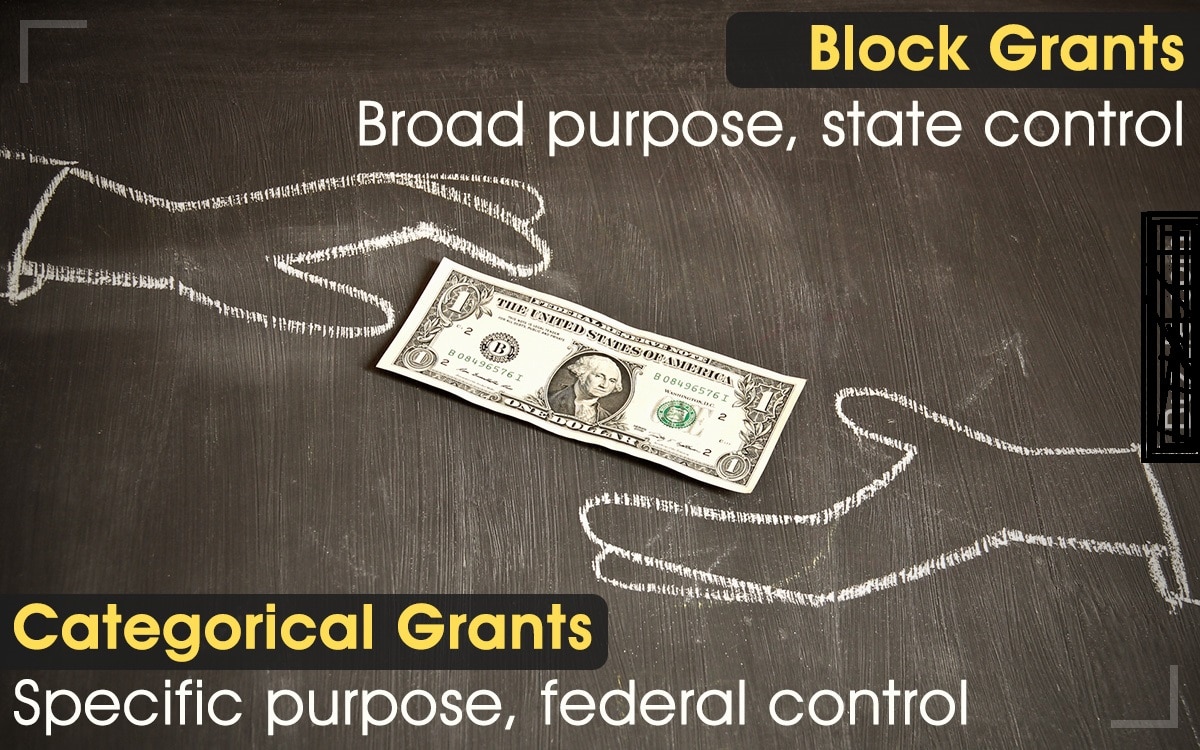Categorical grants will be how the federal government affects local and state governments. Such grants come with strict rules on their spending. We’ll explore these limitations and look at some examples in this report.
Definition of Categorical Grants
Imagine you’re the governor of a state, and you want to fund state jobs. How would you like to get a boatload of cash from the federal government? Sounds good, right? Not so quick… there’s always a catch!
This is the basic notion of a categorical grant. A categorical grant is a money given by the national government to state and local authorities, with strict limits on how it is to be invested. The money can only be obtained if the local or state government complies with regulations. However, the states don’t need to spend the money if they do not want to obey the regulations.
Categorical Grants and the Federal System
With this system, the national government has power in some areas, such as military spending, whereas the local and state governments have power over other areas, such as schooling, roads, and law enforcement. But only because certain areas are the domain of local governments doesn’t indicate that the federal government can’t influence them. Rather, the national government uses the money to convince the countries to comply with national objectives. This is really where categorical grants get involved.
Take education, for instance. Nowhere in the Constitution does it say the federal government should provide for education. Yet, We’ve Got a Department of Education in Washington, D.C. Why is this? The easy answer is that the Department of Education does not provide schooling. On the contrary, it provides federal funds to local states to oversee education. However, the cash is contingent upon local governments meeting the requirements determined by the Department of Education.
Categorical grants are the most common kinds of grants provided by the federal government to state and local governments, but they are not the only type. Additionally, there exist block grants, which are given by the national government directly to local authorities with few strings attached. They’re basically the opposite of categorical grants.

Types of Federal Grant Funding
The federal government offers financial assistance to the nations, different non-federal government agencies, and other entities. The objective of these grants is to support a program or function that is helpful to the public. Federal grants cannot be utilized as federal help or loans to individual men and women.
Furthermore, federal grants may not be used to acquire property or contract services for the direct benefit of the federal government. Federal agencies provide more than 1,000 grant programs each year, every one of which falls into one of the following classes:
Project Grant Funding
Project grant funding is awarded to subsidize certain particular providers, for a fixed time period. After a project grant has been approved, the financing agency accepts applications from qualified organizations, which compete for a portion of the total grant funding. Once the application period has finished, the agency evaluates each one, then awards grants to those who meet the program criteria.
As an example of job grant funding, the U.S. Department of Justice operates the Justice and Mental Health Collaboration Program. This program gives grants to states, local government agencies, and Indian tribal organizations to improve access to mental health care services for criminals suffering from mental illness. Applicant agencies must submit a statement of how their projects will address the program’s required six goals. About 20-30 of those highest-scoring applicants receive grants.
Formula Grant Funding
Formula grant funds are used for continuing programs that serve a specific group of individuals, like children with disabilities, or low-income pupils. Formula funding doesn’t have a competitive selection procedure but is determined based on general standards, such as people, or alternative census standards. All applicant agencies that meet the program demands can get funding under the formula grant financing procedure.
As an illustration of formula grant financing, the U.S. Department of Health and Human Services (“DHHS”) functions the Nutrition Services Incentive Program, which provides grant financing to encourage effective delivery of nutritious meals to the elderly in certain geographical locations.
The formula used to determine the size of grants given to every applicant relies on the number of meals served to the elderly in the prior year, compared to other nations or areas. The machine is automatic in that, as long as each state reports their meal tallies, the DHHS reimburses $0.50 for each meal delivered.
More For You:
Cases of Social Conflict Theory in Everyday Life
What Is a Correlational Study And Examples of correlational research